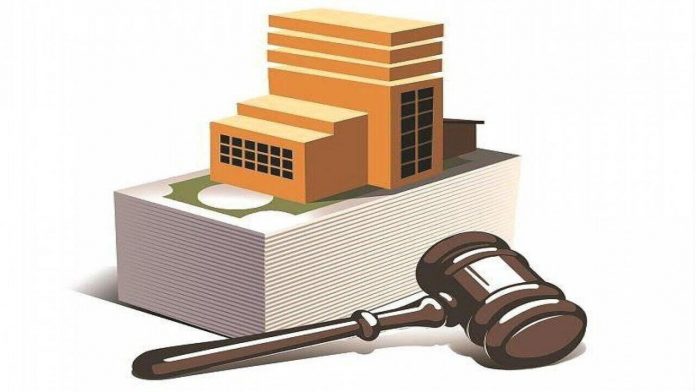This article is written by Ms Aporva Shekhar. from KIIT School of law. This article is a brief analysis of the implications and importance of Section-32A of the Insolvency and Bankruptcy Code.
Table of Contents
Introduction
The IBC (Insolvency and Bankruptcy Code) was enacted on 28th May 2016 and Section 32A was added to the Code through the 2019 Amendment. The exceptions to the immunity that is granted to corporate debtors for offences committed during the period of CIRP (Corporate Insolvency Resolution Proceedings) from the date of approval by the NCLT (National Company Law Tribunal) are given under this Section. This Section is a very significant development for the Code as it provides incentives for investors to use their money and resources without the fear of being persecuted for the offences committed before or during the CIRP. Section 32A discharges a corporate debtor of liability even if a corporate debtor is prosecuted after the date of approval of the resolution plan.
Analysis of Section 32A
As stated above, this Section of the IBC plays a critical role in alleviating investor concerns regarding the assets and property of the corporate debtor by providing immunity from liability and has a retrospective effect.
Sub-section 1
The immunity commences from the date the resolution plan is approved by the relevant adjudicating authority mentioned under Section 31 of the abovementioned Code. This sub-section further provides that even before the approval of a resolution plan, the corporate debtor can claim immunity from any prosecution during the CIRP. Section 32A grants immunity from liability to only selected individuals who fulfil certain requirements. These requirements are as follows:
- The immunity provided in this subsection extends to persons who were not promoters or part of the management of the corporate debtors or the related parties that are made in charge of management in place of the corporate debtor by the resolution plan.
- The immunity also extends to such persons that were not found to be abetting or conspiring the commission of an offence by the relevant adjudicating authority based on material evidence in its possession.
- But the immunity provided under this subsection shall not extend to persons who were involved in the commission of the offence or were associated with the corporate debtor in this regard, like the designated partner or any other officer in default who was supposed to regulate the corporate debtor’s business.
The proviso to these conditions states that any prosecution instituted against the corporate debtor during the CIRP will be discharged if the corporate debtors fulfil the above-mentioned conditions. The second proviso to the sub-section further adds that any person who can be classified as a designated partner as per the definition of Section 2(j) of the Limited Liability Partnership Act 2008, or any officer who was in default as per the definition of Section 2(60) of the Companies Act 2013, was indirectly or directly involved in the commission of the offence or was responsible or in-charge of the business affairs of the corporate debtor or was in any way associated to the corporate debtor in any way shall not be exempted from any liability and will be prosecuted for the offence committed by the corporate debtor and shall be punished accordingly. Regardless of the fact that the corporate debtor’s liability has ceased as provided under this subsection, the above-mentioned persons shall still retain their liability.
Sub-section 2
Sub-section 2 of the abovementioned Section deals with the liability attached to the corporate debtors’ assets and properties. This sub-section makes the assets and properties of the corporate debtor free of liability, it states that no action shall be taken against any of the assets or properties of the corporate debtor for offences committed before the commencement of CIRP or after the approval of the resolution plan by the relevant adjudicating authority mentioned under Section 31 of the abovementioned Code, which includes these assets and properties. The action that is prevented by this clause includes anything that changes in the control of the corporate debtor to a person or leads to the sale of liquidation assets to a person who was not associated to management of the corporate debtor or any other related party or a promoter, and any person who is suspected to abet or conspire to commit any offence by the relevant investigating authority on the basis of material evidence. There are several clarifications given to make the application of this sub-section as accurate as possible, they are as follows:
- The action that is prevented by the virtue of sub-section 2 shall include seizure, attachment, confiscation or retention of property of the corporate debtor by virtue of any applicable law.
- Any other person who has acquired the property through CIRP or anyone other than the corporate debtor shall not be given the benefit of prevention of action given under this sub-section.
Sub-section 3
Sub-section 3 of the abovementioned Section adds that, with reference to the immunity given under sub-sections 1 and 2, states that any person claiming the benefit under the previous sub-sections is not free from providing required assistance to the investigating and is obligated to provide assistance to any investigating authority investigating under any applicable law. They must cooperate and provide assistance to any investigating authority that is investigating any crime that was committed before the commencement of CIRP.
The implication of Section 32A
- Section 32A inspires confidence in bidders who want to invest in properties and assets of disputed companies. The retrospective effect of the Act that grants blanket immunity to the corporate debtor and their assets and properties ensures an expedient closure of the CIRP. This Section plays an integral role in discharging several big cases, like the Bhushan Power And Steel Ltd vs S. L. Seal & Ors (2016).
- This Section was introduced after the adjudication of the JSW Steel Ltd. v. Mahender K. Khandelwal and Ors. (2020) case. Whilst the adjudication was pending in the above-mentioned case, the Insolvency and Bankruptcy (Amendment) Ordinance, 2019 was formulated considering the circumstances that arose in the case. And then this newly incorporated Section was applied by the NCLAT (National Company Law Appellate Tribunal) in the pending case against the recommendations of the Enforcement Directorate.
- Prior to the insertion of the abovementioned Section, the corporate debtors were burdened with liabilities and the hassle of prosecutions for past offences. Hence there was a need to incorporate a provision that unburdened the corporate debtor of any liabilities so that they may proceed towards a successful resolution. This Section mainly aims to provide resolution applicants with a fair opportunity to revivify corporate debtors without the threat of liabilities springing from mala fide acts of the past.
- Section 32A is a particularly powerful provision as it provides for the prevention of any prosecution, attachment, seizure, action, confiscation or retention against a corporate debtor. The retrospective effect of this non-obstante Section read with Section 238 of the abovementioned code has a favourable overriding application. The wide-reaching application of this provision also raises a question as to what kind of proceedings would come within the ambit of this provision.
- The NCLAT aptly answered this question in the case of Shah Brothers Ispat Pvt. Ltd. v. P. Mohanraj and Ors (2018), wherein the NCLAT stated that all criminal proceedings, like the criminal proceedings under the Negotiable Instruments Act 1881 do not come within the ambit of this above-mentioned Code and hence cannot be overridden by the provision of Section 32A.
- Since this provision is still relatively new, there are only a few cases that have tested the efficacy, but the larger issue still remains that in several situations it might extinguish the remedies of other agencies against the corporate debtor, and it is still left to be seen. The mere approval of a resolution plan can override statutory remedies available to others against the corporate debtors by the virtue of this provision.
- Another considerable issue that might be created by this above-mentioned provision is that it might bar the attachment of property that might have been acquired through criminal acts. Such asset or property may have been acquired by the corporate debtor shortly before the commencement of the CIRP.
- This Section will nullify any action that could be taken to discharge the criminally acquired property or asset. Such illegally obtained assets or properties would be legalized after the conclusion of the CIRP. The widespread application would also ensure that essentially no proceeding can take place in the future against the illegally acquired property. There are many potential pitfalls of the abovementioned provision that can only be identified and rectified by the judiciary.
Relevant judicial precedents
Even though this is a relatively new provision there have been several instances where this new law has been put to test by the adjudicating authorities. Some of the relevant decisions that analyse and describe the ambit of Section 32A are as follows:

Manish Kumar v. Union of India (2021)
This case mainly dealt with the recurring question of the continuity of liability in respect of the offences committed by the corporate debtor. The writ petition challenging the validity of the abovementioned provision on the grounds of arbitrariness and violation of constitutional Articles 300A, 19, 14 and 21 were dismissed by the Supreme Court recently. It was the contention of the Union of India that corporate debtors deserve to start over with a clean slate and the abovementioned Section was incorporated to give a statutory basis for the furtherance of that goal. The Court observed that it is important for the corporate debtors’ criminal liability to be extinguished so that the new management can break clean with the past and start over. The unequivocal declaration of the Court which upheld the validity of Section 32A will be binding on all subordinate courts and tribunals.
The Court also added that such immunity as granted under the abovementioned provision shall only be applicable when the resolution plan has been approved and the management has been replaced. To ensure the timely completion of the CIRP it is extremely important to attract investors who might only invest unencumbered from the threat of liability. Such investors must be granted immunity for the acts of the past which they did not commit which has also been stated in the provision itself.
JSW Steel Ltd. v. Mahender K. Khandelwal and Ors. (2020)
This case which essentially facilitated the incorporation of Section 32A was instrumental in establishing a concrete precedent with regards to this provision. The Section was still in its ordinance stage during the adjudication of this case, but the NCLAT relied on the ordinance to issue a notification to the Enforcement Directorate and the Central government to respond to whether JSW steel would be exempted under the abovementioned Section. During the pendency of the Prevention of Money Laundering Act, 2002 proceedings in this case the NCLAT made the following relevant observations regarding Section 32A.
- That the provision would have retrospective effect as it was merely clarificatory.
- And for the Section to be applicable, the investigating authority must have reason to believe based on material evidence in their possession that the new management had abetted or conspired to commit the offence in question. The investigation authority may not keep such information latent till investigation in all fields have concluded.
The appeal to NCLAT for this case is still pending, and only after its resolution can a conclusive answer be provided to the application of the Section in the present case.
Tata Steel BSL Ltd. and Anr. v. Union of India and Anr. (2019)
In the present case on the approval of the resolution plan for revival of the petitioner previously known as Bhushan Steel Ltd. Under the IBC process, the Delhi High Court consequently discharged the accused on the plain application of Section 32A of proceedings filed against them for alleged offences before the trial court under the Indian Penal Code 1860, the Companies Act 2013 and 1956.
Conclusion
The courts are still struggling to interpret Section 32A, given the vagueness and ambiguity revolving around the Section. Section 32A aims to detach all liability associated with the corporate debtor and their property and assets to prevent attachment or confiscation of the same which would defeat the object of the Code. The IBC has sought to facilitate successful resolution applicants to start over with a clean slate without the fear of past offences by strengthening the insolvency framework to attain a positive economic outcome.
References
- https://www.nishithdesai.com/information/research-and-articles/nda-hotline/nda-hotline-single-view/newsid/6075/html/1.html?no_cache=1
- https://taxguru.in/corporate-law/nclt-kolkata-applicability-section-32a-ibc-liquidation-proceedings.html
- https://www.insightsonindia.com/2021/01/21/sc-upholds-ibcs-section-32a-why-is-it-important-what-are-the-implications/
- https://www.mondaq.com/india/insolvencybankruptcy/961136/section-32a-of-the-ibc
- https://www.snrlaw.in/wp-content/uploads/2021/03/SR-Insights-IBC-Supreme-Court-of-India-Endorses-the-Fresh-Start-on-a-Clean-Slate-Principle.pdf
- https://www.barandbench.com/columns/policy-columns/section-32a-of-the-ibc-an-amendment-with-far-reaching-consequences
LawSikho has created a telegram group for exchanging legal knowledge, referrals and various opportunities. You can click on this link and join:
https://t.me/joinchat/J_0YrBa4IBSHdpuTfQO_sA
Follow us on Instagram and subscribe to our YouTube channel for more amazing legal content.
 Serato DJ Crack 2025Serato DJ PRO Crack
Serato DJ Crack 2025Serato DJ PRO Crack










 Allow notifications
Allow notifications



